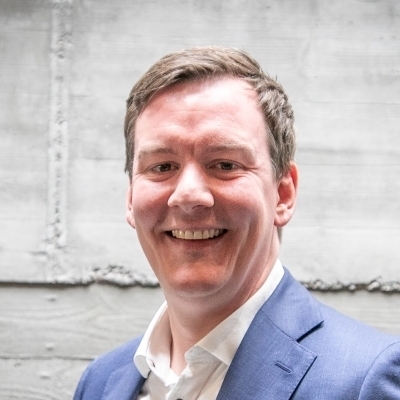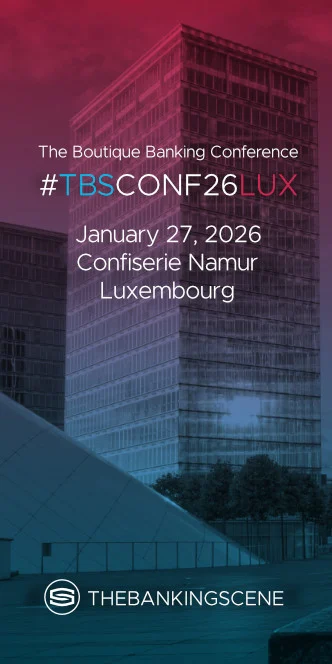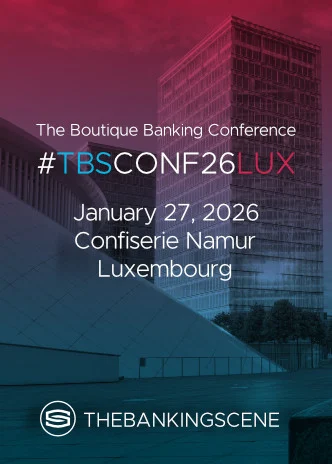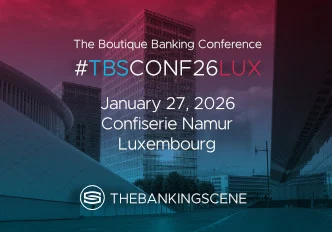
Insights & Opinions
From Cultural Awakening to Technological Orchestration - The Metamorphosis in Banking
Mon, 28 Jul 2025


At The Banking Scene Conference 2025 Brussels (TBSCONF25BXL), the theme of “The Metamorphosis in Banking” was explored in depth. We were lucky with executives like Kuba Fast, CEO of Chase UK, Kim Van Esbroeck, Chief Digital Officer of Beobank, Francesco Aghemio, Head of Belgium and Netherlands Branches at Revolut and Benoît Lafort, Regional Vice President Continental Europe at nCino, who offered a rich look at how banks are rethinking transformation in a time of rapid change and growing customer expectations.
Perhaps you remember from a previous post, but as a reminder, I witnessed across the sector that banks are shifting from traditional, product-led institutions to dynamic, service-oriented ecosystems, designed not just around technology, but around people. This transformation is not about adding a digital layer. It’s about changing how we think. It’s about agility, authenticity, and the courage to reimagine what a bank can be. This is for me what “A Metamorphosis in Banking” is about.
In this blog, I wish to share a few lessons that emerged for those who wish to relive the session or were unable to attend the stage (or the event).
Move With Purpose, Not Just Speed
Perhaps the most important reflection: transformation isn’t a race to tick boxes or outpace competitors. It should be about building something that works, sustainably, coherently, and with meaning for the organisation and its stakeholders.
There was a shared scepticism toward shiny metrics or big launch moments. What matters is whether what you build actually makes life better for the customer and easier for the employee. If not, it’s just theatre.
One leader described their approach as “restless dissatisfaction with the status quo.” That mindset, of always questioning, always iterating, was seen not as disruptive but necessary. Real progress doesn’t stem from hype; it results from humble, continuous improvement.
A Metamorphosis isn’t about survival; it’s an evolution to a new level of maturity, aligned with the context (in this case, the market and its expectations) you’re working in.
Make Sure Everyone is Looking in The Same Direction First
Speed means nothing if you’re going in the wrong direction.
Cultural alignment was emphasised again and again. No amount of funding or brilliant strategy matters if people inside the organisation don’t understand the journey or feel part of it. This brings us back to ethos, purpose, a sense of belonging and meaning.
One bank brought all 1,400 employees together in a single auditorium to share its transformation plans, not because they had to, but because they knew change only sticks when everyone feels it belongs to them.
There was a clear conviction: transformation driven purely from the top, or by fear of the outside world, won’t last. It has to come from a shared belief that the future being built is worth showing up for.
Rebuilding, Not Reinventing
Now that we understand the fundamentals required to start building, let’s dig deeper into what the experts shared about the building process.
Because those days are gone when new players proudly claimed the end of banking was near (my disbelief in this prediction is actually the reason The Banking Scene exists). Perhaps that explains the recurring theme in conversations on May 22, which was that transformation doesn’t have to start with burning everything down. In fact, many of the most successful journeys begin with a sense of respect for what already works. One leader put it best: they weren’t out to be the anti-bank. They simply wanted to build the kind of bank they always wished they could work for, free from legacy constraints and compromises.
This is a lesson in maturity. Banks are risk managers; they like a predictive environment, like (sorry innovators…) most of their clients do when dealing with their money. It’s not about revolution and rebellion, but about evolution and the freedom to do things properly, from the ground up, with high standards and deep care.
Adapt to Fit, Don’t Just Scale to Grow
Another strong insight was around market-fit. Especially for those expanding across borders: simply scaling a one-size-fits-all model no longer works (if it ever did). Whether it’s offering local bank accounts, adapting to country-specific formats like structured communications, or making sure customer support feels truly local, the details matter. This could be a real game-changer for Revolut in its effort to become the primary bank for its customers.
In some cases, adapting to local regulations or expectations meant slowing down or altering the product roadmap. However, doing so earned trust, and that trust is what enabled Revolut to transition from being a secondary option to a customer’s primary relationship.
This is just one example, but the lesson applies to all, whether it’s a local bank, a neobank, or a branch of an international banking group: if you can’t determine what customers need to do their banking, and if you think ‘good enough’ is acceptable, simply because, for example, your IT provider hasn’t yet developed the right features, you will struggle to move beyond the second-bank or even third-bank phase, as your products are not appealing enough for people to switch from that one standout feature to using the full range of banking services.
Fix the Foundations Before You Scale the Tower
Technology did come up, but in a refreshingly honest manner. Leaders didn’t talk about innovation in abstract terms or about buzzwords they couldn’t do without. Instead, they addressed their struggles with fragmented data, inflexible systems, and projects that went nowhere because the fundamentals weren’t in place.
One expert joked that while AI grabs all the headlines, it’s often the unglamorous work, such as integrating data, breaking down silos, and setting up real-time dashboards, that makes the real difference.
What emerged was a consensus that technology is only useful when it solves a real problem: when it makes operations smoother, decisions clearer, or better serves customers. Anything else is a distraction. That includes automating things that aren't yet understood, or layering shiny tools over data that can't be trusted.
No one downplayed the potential of emerging tech; they just wanted it built on something solid. In that sense, the takeaway was simple: transformation doesn’t start with tech. It starts with clarity, humility, and a lot of behind-the-scenes cleanup.
Final Thoughts
If there's one thing these sessions made clear, it's that real transformation in banking is a long game. It isn't about who has the flashiest launch or the most features. It's about whether what you're building makes sense, works in practice, and genuinely improves the lives of the people you serve.
This kind of change doesn't happen overnight. It takes thoughtful planning, honest conversations, and a willingness to fix the messy stuff under the surface before chasing shiny new tools.
When banks take that approach, from the inside out and with people in mind, that's when transformation really starts to mean something.



